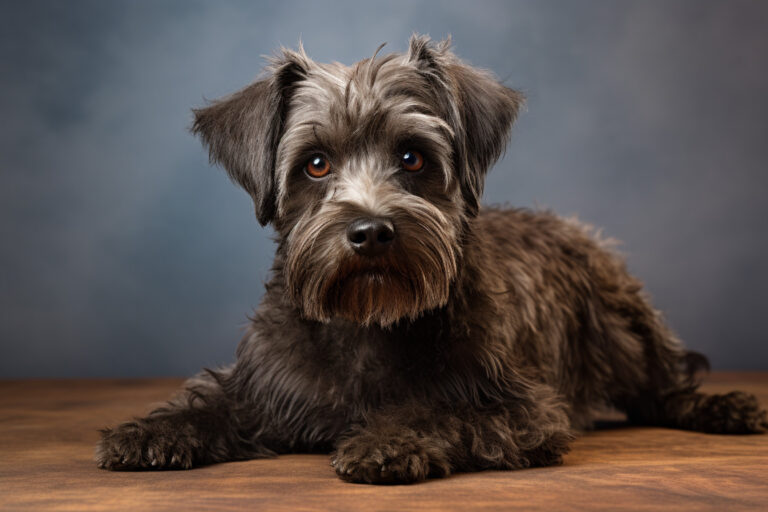Schnoodle Dog Breed Information
The Schnoodle is a hybrid breed that blends the sturdy Schnauzer with the intelligent Poodle, and it’s become quite a hit for its friendly personality and low-allergen coat. These dogs come in several sizes, from Toy to Giant, making them an excellent fit for various living spaces, whether a cozy apartment or a spacious house.
They have a curly coat that doesn’t shed much but needs regular grooming to keep it looking good. Schnoodles are quick learners and are known for their skill in agility courses, which also means they enjoy a good mental or physical challenge.
However, those interested in owning a Schnoodle should be aware of possible health issues specific to the breed, including allergies and hereditary conditions. As part of the family, Schnoodles form deep connections with their owners, offering loyalty and a charming presence that’s hard to resist.
Key Takeaways
- Schnoodles are a hybrid mix suitable for allergy sufferers.
- Adaptable to various homes, they require regular grooming.
- These intelligent dogs are loyal and need mental stimulation
Schnoodles blend the sturdy Schnauzer with the intelligent Poodle. They adapt well to different living spaces and have low-shedding coats.
Known for intelligence and agility, Schnoodles thrive on challenges but watch for breed-specific health issues. They bond closely with their families, providing loyal and endearing companionship.
Quick Facts
The Schnoodle is a mixed breed created by breeding a Poodle with a Schnauzer, offering a variety of sizes ranging from Toy to Giant.
Originating in the 1980s in the United States, this dog combines the best traits of its ancestors, seeking a mix of the Schnauzer’s sturdiness and the Poodle’s grace.
Whether for a small apartment or a larger home, there’s a Schnoodle size to fit different lifestyles. The smaller Toy and Miniature versions are great for compact spaces, while the larger Standard and Giant Schnoodles thrive with more room.
Known to live about 12 to 15 years, these dogs have a curly coat that doesn’t shed much, thanks to their Poodle heritage.
They’re known for their affectionate nature, intelligence, playful attitude, and loyalty to their owners.
Schnoodle Pictures
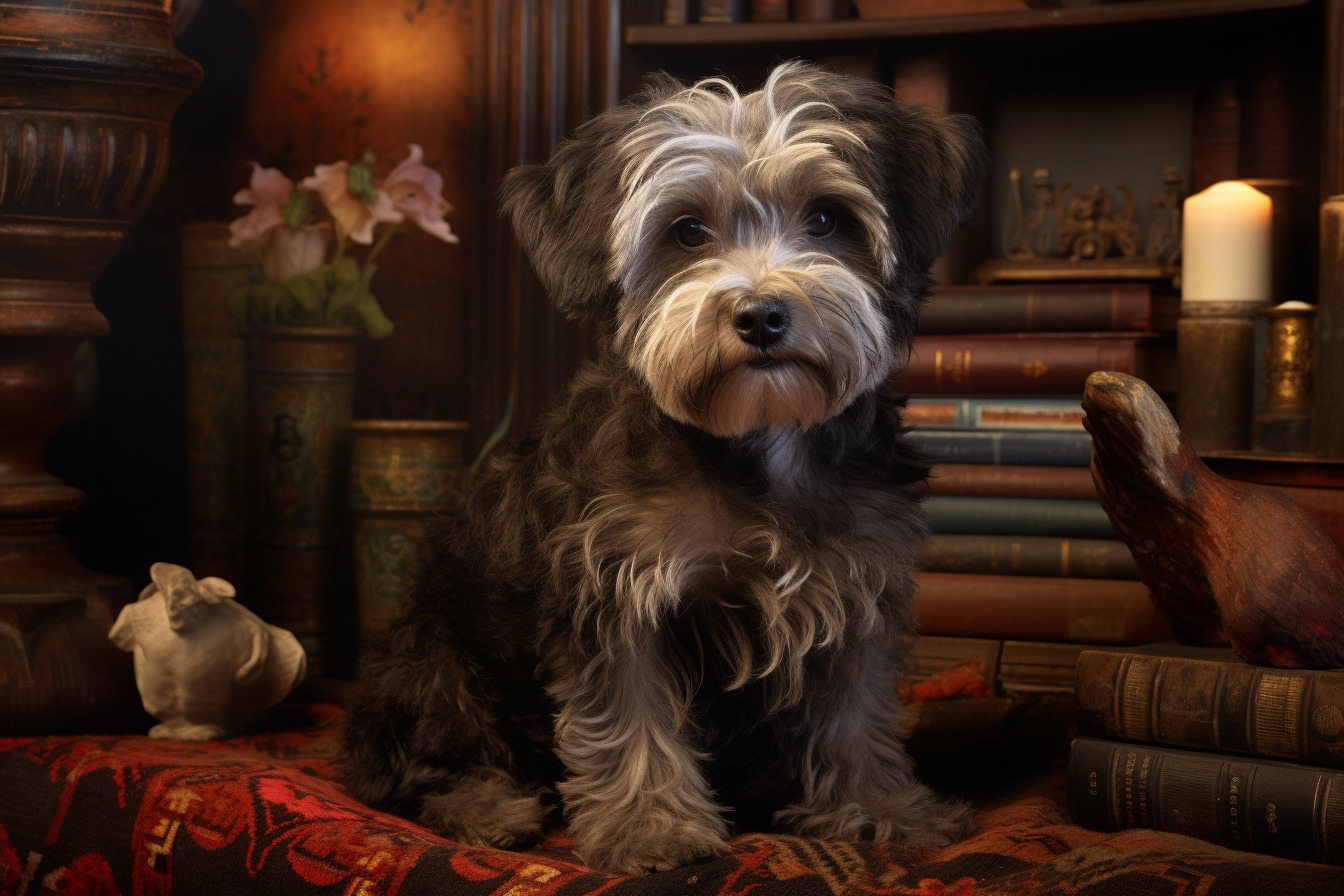
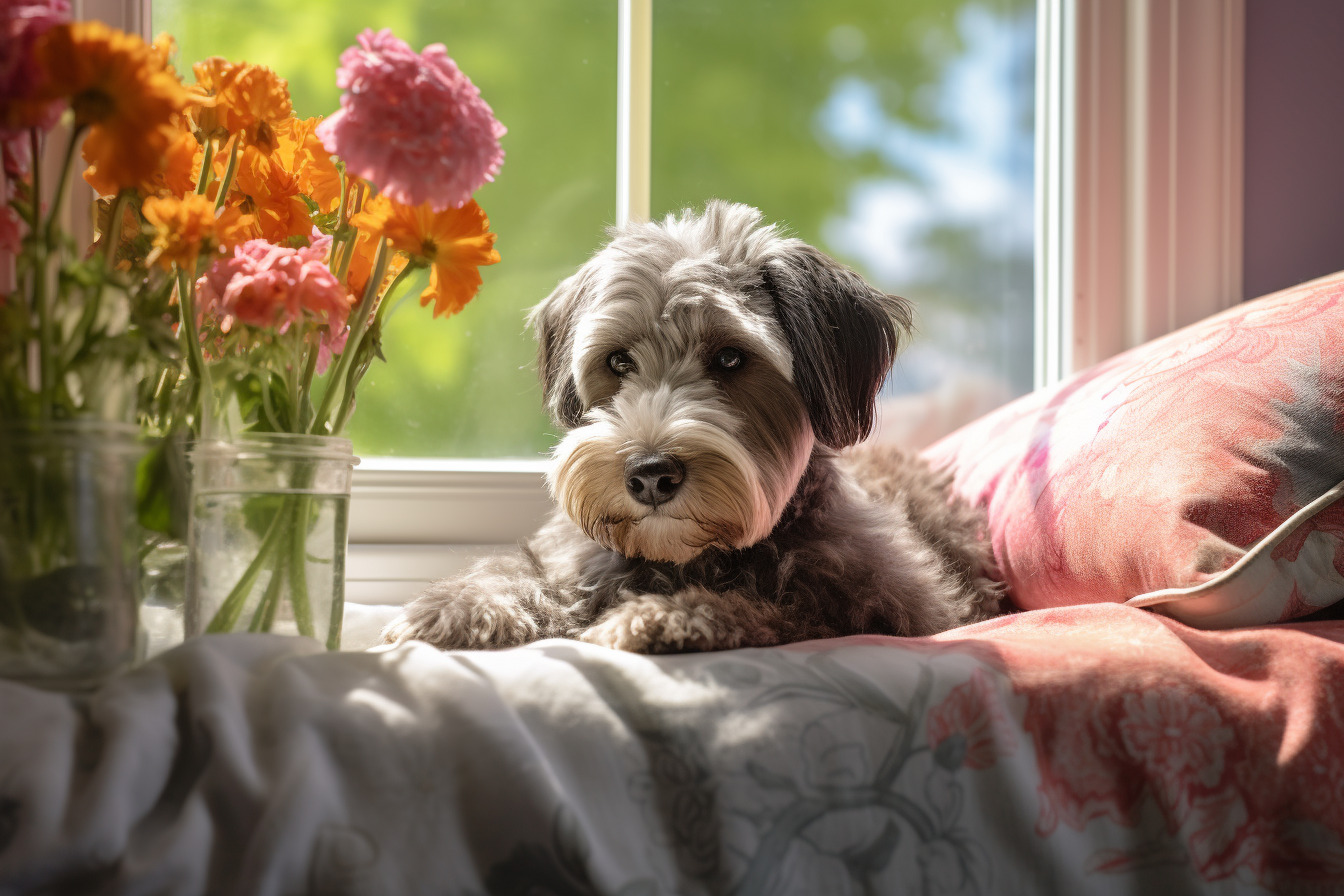
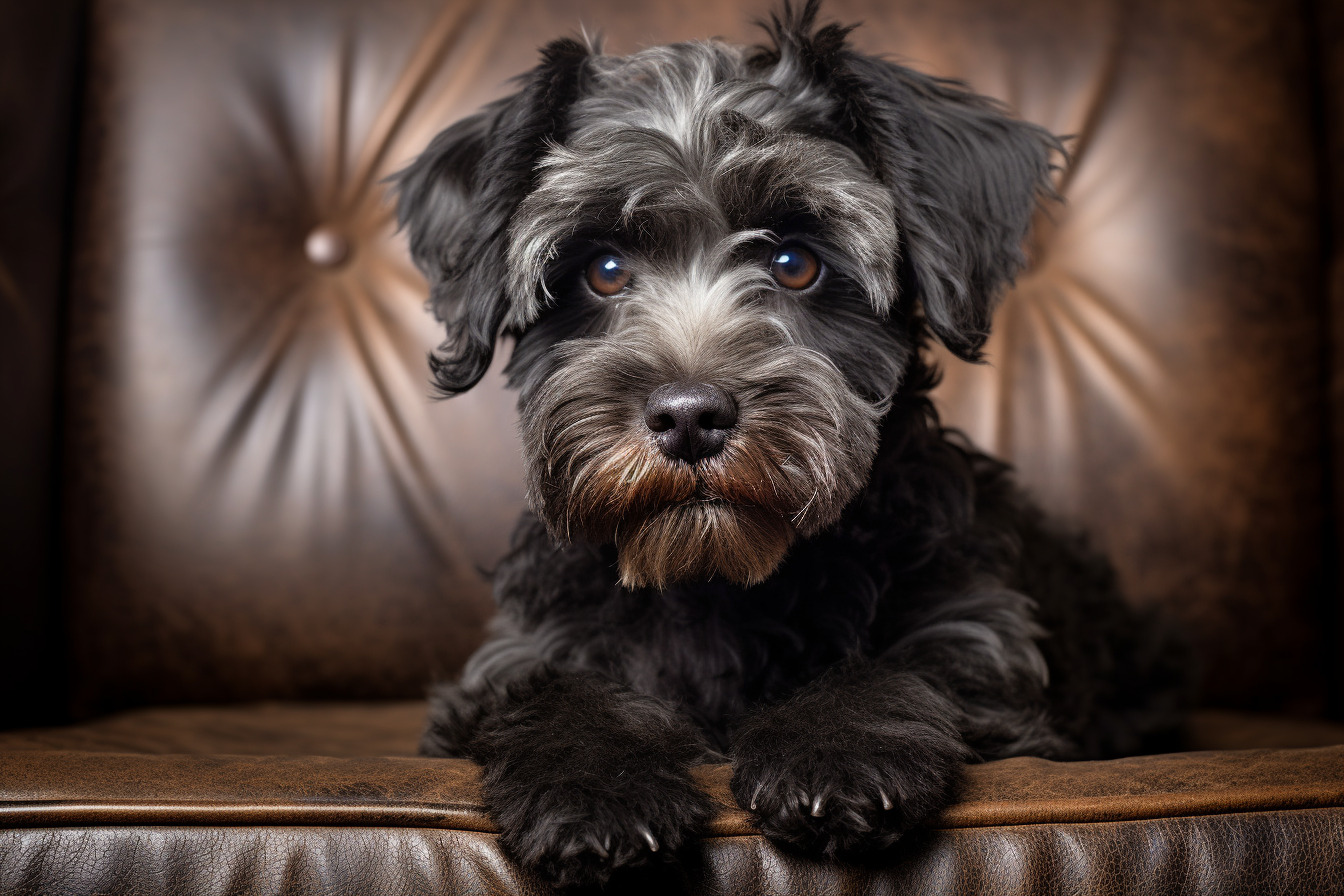
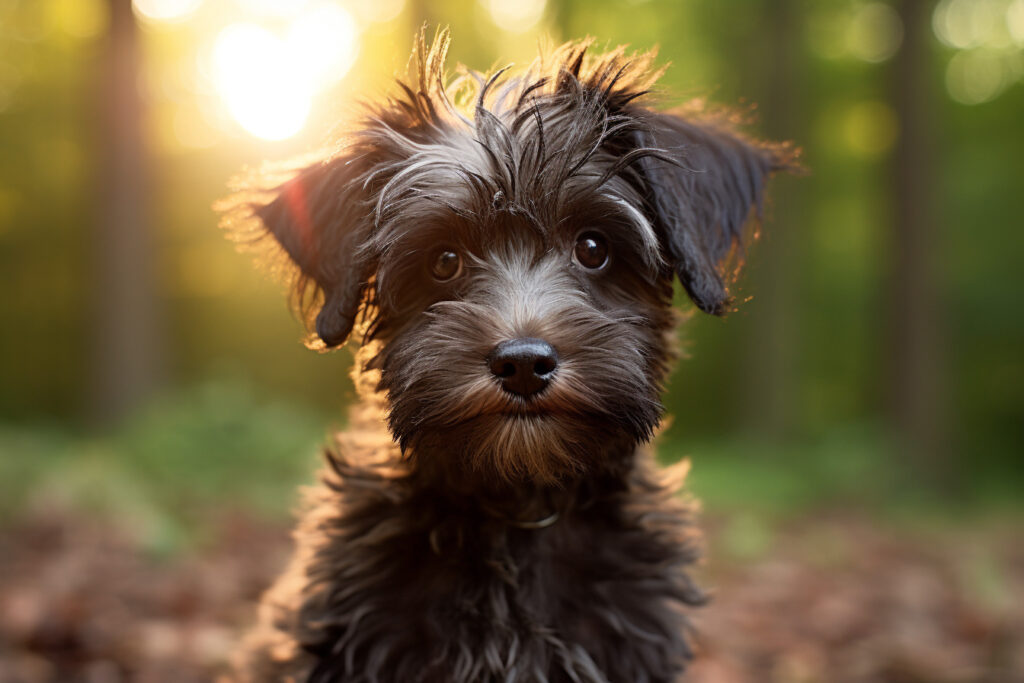

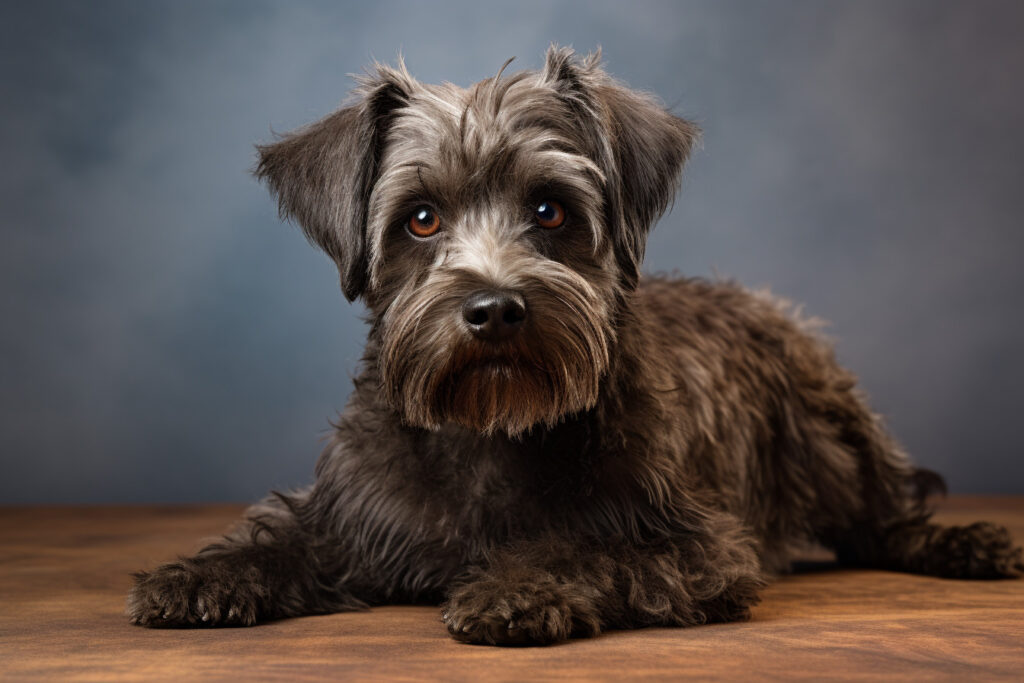
Overview
Schnoodles are a hybrid breed that combines the best characteristics of Poodles and Schnauzers, making them versatile pets for various home environments. To suit different preferences, these dogs come in four sizes – Toy, Miniature, Standard, and Giant.
Known for their friendly demeanor, ability to adapt, and sharp minds, Schnoodles are often praised as excellent family pets.
It’s essential for those interested in owning a Schnoodle to be aware of the potential health issues inherited from their parent breeds. Choosing a reputable breeder and focusing on preventive health care can help ensure these dogs lead a long and healthy life, typically around 12-15 years, becoming a valued family member.
Breed Key Features
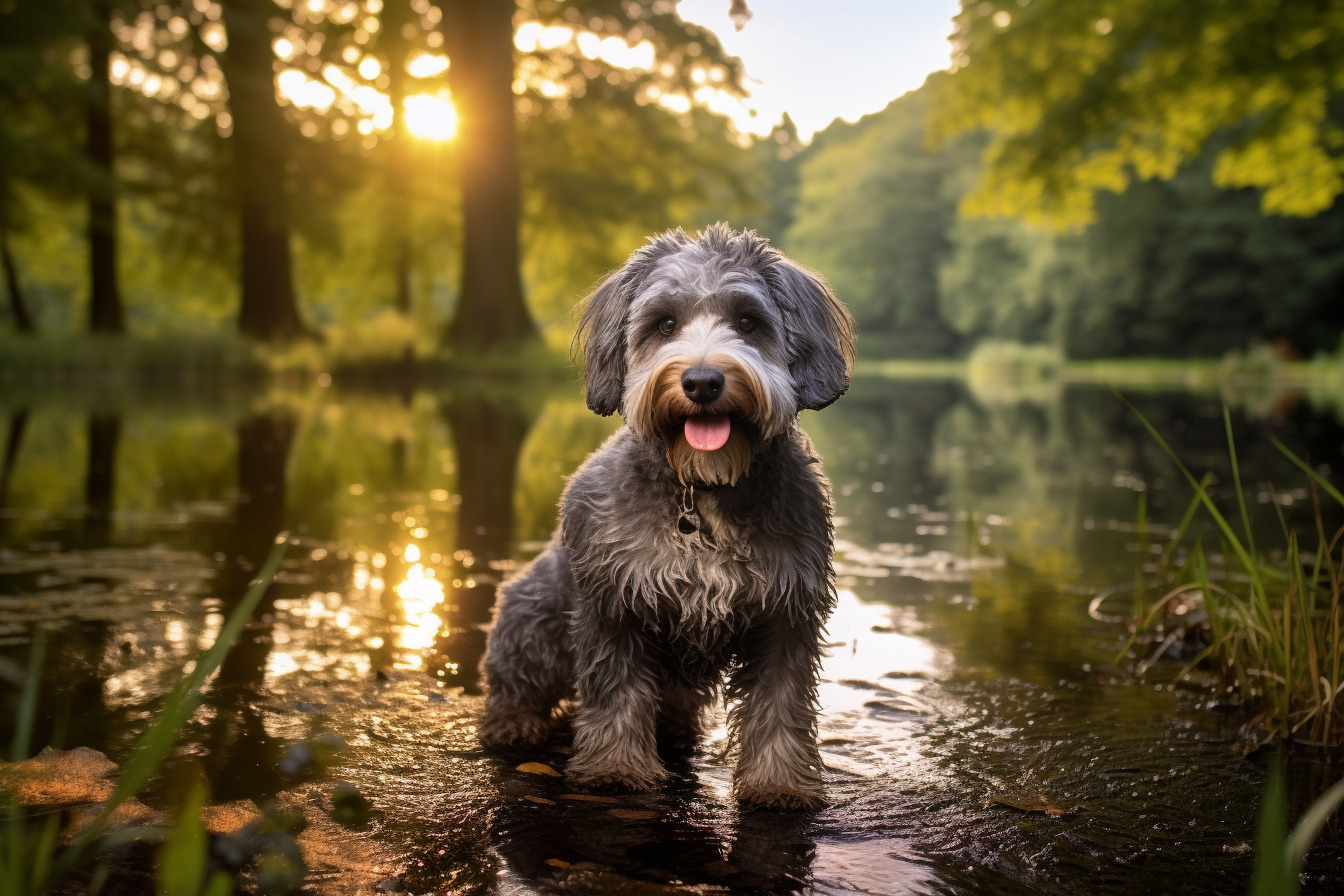
Schnoodles stand out with their hypoallergenic coats, making them an ideal choice for those with allergies. They come from a mix of Poodles and Schnauzers, bringing together both breeds’ smartness and minimal shedding.
With size options ranging from the small Toy to the large Giant, Schnoodles can fit into various home environments, which is why many families find them excellent pets. Keeping their coat in top shape through routine grooming is essential to prevent health issues.
The emotional comfort of a hypoallergenic coat, the ability to find a size suitable for any living space, and their friendly nature make Schnoodles a lovable lifelong companion. They are also known for their flexible nature, thriving in busy cities and peaceful countryside settings.
Owning a Schnoodle means staying on top of their health needs, watching for conditions like allergies, pancreatitis, and luxating patella with regular vet visits.
Breed Origin Story
The Schnoodle is a creative mix that came to life in the United States around the 1980s, born from the purposeful mixing of Poodles and Schnauzers. Breeders wanted a dog that had the Poodle’s ability to not trigger allergies with the diverse sizes and personalities of Schnauzers.
Due to its minimal shedding coat, This new breed aimed to provide a pet that was both smart and easy to live with for those with allergies. The Schnoodle was tailored to be a lovable companion, combining the best characteristics of its parent breeds.
They were selected for their intelligence, friendly nature, and a coats that don’t leave hair everywhere.
Hybrid Breed Genesis
The Schnoodle came to life in the United States around the 1980s, born from the careful breeding of Poodles and Schnauzers. Breeders aimed to create a dog that was both friendly for those with allergies and maintained the engaging qualities of its parent breeds.
This mixed breed combines the smarts and low-shedding coat of the Poodle with the durability and lively personality of the Schnauzer. The Schnoodle is a testament to thoughtful breeding, offering a balanced mix of features that make it a beloved pet.
Schnauzer-Poodle Mix Origins
The Schnoodle came to life in the United States around the 1980s. This mixed breed was born from pairing a Schnauzer with a Poodle, aiming to blend the Schnauzer’s lively intelligence with the Poodle’s allergy-friendly, curly coat.
Both parent breeds were valued for their practical abilities, contributing richly to the Schnoodle’s adaptability. The size of a Schnoodle can vary, depending on whether a Miniature, Standard or Giant Schnauzer is matched with a similarly sized Poodle.
This results in various sizes and mixed characteristics inherited from the Schnauzer and the Poodle.
Historical Breeding Purpose
The Schnoodle was created in the 1980s in America, aiming to blend the Poodle’s allergy-friendly coat with the Schnauzer’s strong personality to create a perfect pet.
This mixed breed was meant to cater to families with allergy concerns while offering the smarts and devotion found in its parent breeds. Schnoodles were expected to be flexible, intelligent, and friendly, with the Poodle’s trait for minimal shedding and the Schnauzer’s adaptability – a quality prized in a farm dog.
However, because they are a mixed breed from their initial creation, the presence of these traits in Schnoodles can differ quite a bit.
Variety in Size of Pet Parents
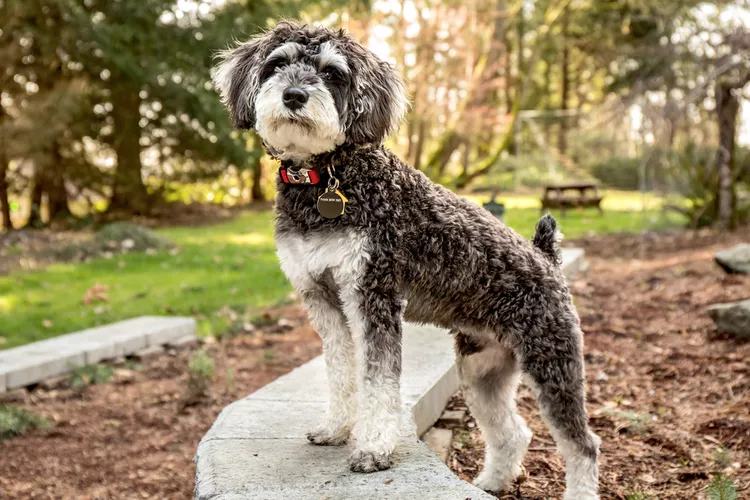
Schnoodle dogs come in various sizes, each with unique needs and characteristics. The smallest size, the Toy Schnoodle, can weigh just 6 pounds and stand under 10 inches tall.
Conversely, the Giant Schnoodle can tip the scales at 75 pounds and reach up to 26 inches in height. Different sizes of Schnoodles include Toy, Miniature, Standard, and Giant.
For instance, a Miniature Schnoodle typically weighs 10-20 pounds and measures 10-15 inches, while the Standard variety weighs 20-75 pounds and stands 15-26 inches tall. The size of the Schnoodle affects everything from grooming requirements to the amount of exercise they need and even specific health considerations.
Toy to Standard
Schnoodles, a crossbreed of Schnauzers and Poodles, vary in size like their parent breeds. The size of a Schnoodle can range from the small Toy Schnoodle to the much larger Standard Schnoodle.
The Toy Schnoodle is relatively small because it inherits its stature from its Toy Poodle parent, making it an ideal pet for smaller living spaces. On the other hand, the Standard Schnoodle tends to be bigger, resembling the size of a Standard Poodle, and can fit well with families looking for a more substantial dog.
The size of a Schnoodle will often influence the kind of home environment they’re best suited for, catering to the preferences of different potential owners.
Weight Range
Schnoodles come in sizes that vary significantly, with adults weighing anywhere between a petite 6 pounds and a sturdy 75 pounds. The size of a Schnoodle often reflects the dimensions of its Poodle and Schnauzer parents – more prominent parents typically produce more giant offspring.
Bigger Schnoodles, which can weigh between 60 and 75 pounds, usually need more room to roam and about an hour of exercise daily to stay healthy. On the other hand, the smaller Schnoodles, which might weigh between 6 and 20 pounds, are ideal for apartment living and don’t need as much space.
These adaptable dogs fit well into various home environments, catering to different lifestyles and preferences of potential dog owners.
Height Differences
Schnoodles exhibit a range of heights that reflect the sizes of their Poodle and Schnauzer parents. A standard Schnoodle can reach a height of up to 26 inches.
Miniature Schnoodles, born from more minor parents, are sought after for their manageable size and typically match their weight of 10-20 pounds with a proportional height. Larger Schnoodles, whose lineage includes standard and giant Schnauzers, display a broader height spectrum, affecting their health and the care they need.
Size Impact Care
The size of a Schnoodle plays a significant role in the type of care they need for a healthy life. The care varies from Toy and Miniature to Standard and Giant sizes of this breed.
For instance, the larger Standard or Giant Schnoodles crave more exercise, and having a spacious yard can benefit them. They need daily walks and, often, more intense activities to keep them in top shape and prevent unwanted behaviors.
Conversely, the smaller versions are content with less strenuous exercise routines. Yet, no matter their size, every Schnoodle needs regular grooming tailored to their needs and consistent check-ups from a vet to maintain their health across the different sizes of the breed.
Breed Size Variations
Schnoodles come in various sizes due to their mixed Poodle and Schnauzer heritage. The most miniature version, often under 10 pounds, is created from a mix of a Toy Poodle and a Miniature Schnauzer.
The Miniature Schnoodle, with a weight ranging from 10 to 20 pounds, is the offspring of a Miniature Schnauzer and a Miniature Poodle.
The larger Standard Schnoodle can stand as tall as 26 inches and typically weighs about 60-70 pounds, thanks to its Standard Poodle lineage.
The Giant Schnoodle is the largest size, produced by crossing a Giant Schnauzer with a Standard Poodle.
Different breed clubs recognize these size categories, and all share a common trait – they’re intelligent dogs that can adapt to various living environments.
Temperament Traits of Poodle and Schnauzer
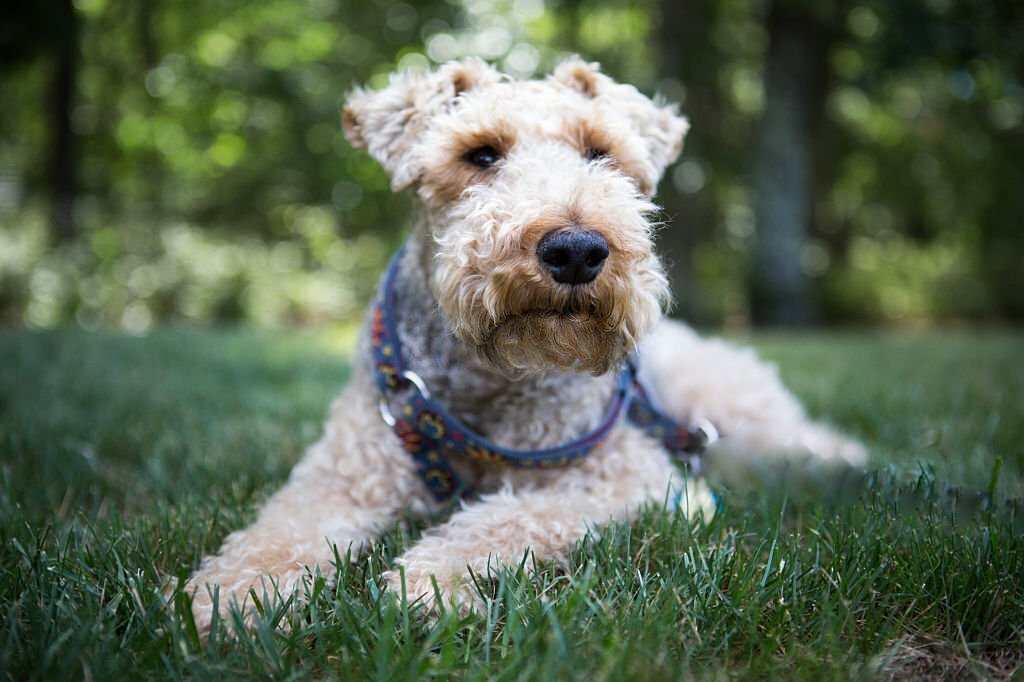
The Schnoodle is a charming mix of its Schnauzer and Poodle heritage, known for its loving personality and strong bond with humans. These dogs fit wonderfully into family life due to their gentle nature.
They’re also intelligent and responsive, which makes them a joy to train. They pick up new commands quickly and are great at problem-solving, often thriving with positive reinforcement.
As for their protective side, Schnoodles have a sharp instinct to keep watch and will often alert you to anything unusual. While they’re not overly aggressive, their tendency to bark at new sights and sounds makes them reliable guard dogs for the home.
Affectionate Family Companion
Schnoodles stand out with their warm and friendly personalities, always ready to show their loyalty and playfulness around the home. These dogs are a mix of Schnauzer and Poodle and bring a range of traits to the table, yet consistently stand out as superb pets for families.
Their intelligence and amiability make them a joy to have around and ideal candidates for therapy roles, offering comfort and friendship.
While Schnoodles can be protective, they are more likely to bark than to exhibit aggression, making for a peaceful coexistence with family and guests. These adaptable canines fit well into different home settings, but they especially enjoy a household with older children or adults.
Always eager to be close to their owners, Schnoodles are faithful companions and an excellent addition to the family circle.
Intelligent, Trainable Nature
Schnoodles inherit their ability to learn from Poodle and Schnauzer ancestors, making them highly intelligent and trainable pets. These dogs respond well to positive training methods and are known for their quick grasp of commands.
Training is more than just teaching tricks; it’s crucial for their mental well-being. Without regular mental challenges, Schnoodles may pick up bad habits. That’s why their bright, trainable nature is so valuable.
Alert Watchdog Instincts
Schnoodles are known for their exceptional intelligence and strong instinct to guard. They are great at looking for anything unusual in their surroundings, making them reliable guard dogs. These devoted pets naturally tend to protect and are eager to make their owners happy.
However, it’s vital to train Schnoodles properly to keep their protective behavior in check and prevent it from turning into aggression. Proper training utilizes their smartness and eagerness to learn, beneficially directing their guarding instincts.
Playful Behavior Patterns
Schnoodles are known for their joyful and energetic nature, often displaying affection through playful actions. They love participating in interactive games, like fetch, which keeps them entertained and helps burn off their excess energy.
These intelligent dogs thrive on challenges that test their brain and brawn, so visiting the local dog park can be the perfect outing. Here, they can mix playtime with socializing.
Being intelligent and easy to train, Schnoodles quickly pick up new tricks and commands, adding variety to their playtime. Owners must provide these lively pets with plenty of playtime to support their overall health and happiness.
Regular play and exercise are essential for these active dogs to stay engaged and in good shape.
Sociable With Strangers
Schnoodles are known for their warm and friendly nature, making them excellent companions for families and individuals. They’re friendly and easy to get along with, which endears them to most people they meet.
To maintain their friendly nature, it’s vital to introduce Schnoodles to various people and settings from a young age. This early socialization helps them feel at ease and maintain their friendly demeanor in different situations.
Their sharp intelligence is vital in helping them learn how to behave around new people. Although they’re outgoing, Schnoodles can also be protective of their families, which allows them to get comfortable with new friends quickly.
Consistent training takes advantage of their playful and adaptable nature, making them a breed that’s naturally good with newcomers.
Health Concerns & Prevention
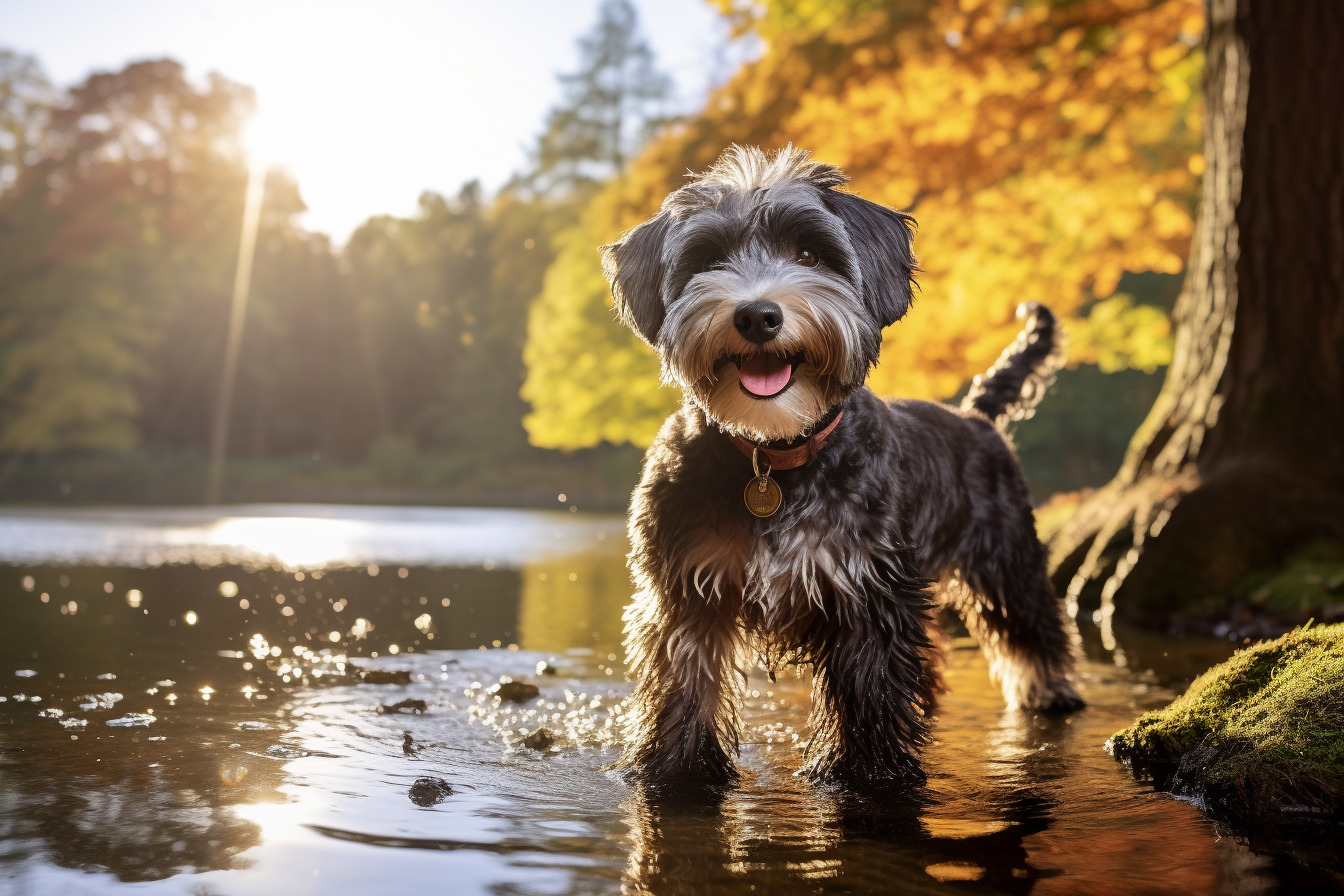
Like all breeds, Schnoodles can inherit health issues that need proactive care. To keep these dogs healthy and increase their lifespan, owners should follow a prevention plan that includes vaccines, parasite prevention, and regular health check-ups.
Schnoodles risk developing certain conditions, so it’s critical to stay alert to any health changes for timely treatment.
Genetic Health Risks in Schnoodles
Schnoodles may face a higher risk of hip dysplasia and eye problems. Some may also suffer from Schnauzer Comedo Syndrome, an inherited skin condition. Breeders can use genetic tests to check their dogs before breeding to reduce these risks.
Preventative Health Practices
A Schnoodle’s vaccine schedule should be based on where they live and what diseases are common there. Heartworm prevention and treatments for fleas and ticks should be part of their routine care. Spaying or neutering can also lower the risk of some cancers in Schnoodles.
Common Health Issues and Their Management
Owners should know about breed-specific allergies and skin issues that Schnoodles may develop. Keeping an eye out for digestive problems such as pancreatitis is essential. Catching orthopedic issues like a luxating patella early for better management is also beneficial.
Genetic Disease Risks
Schnoodles, a crossbreed known for their intelligence and playfulness, can inherit specific health issues such as allergies, pancreatitis, and a shifting kneecap condition known as luxating patella. These issues can stem from genetics and lifestyle.
It’s also not uncommon for Schnoodles to develop hip and elbow dysplasia, which can limit their activity and cause pain. That’s why genetic testing and choosing ethical breeders are critical steps in reducing the risk of these problems.
Regular vet visits and a focus on their well-being, with a balanced diet and regular exercise, play a critical role in managing and preventing these genetic health conditions. Keeping your Schnoodle at a healthy weight is also a proactive step to support their joint health and overall wellness.
Preventative Care for Schnoodles
Taking early steps to protect your Schnoodle’s health can prevent common issues like allergies, pancreatitis, and luxating patella. It’s wise to schedule regular vet visits to catch early warning signs.
To keep your dog healthy, give them a well-rounded diet and plenty of exercise to reduce pancreatitis risks and support strong joints, helping to avoid luxating patella. Dental hygiene is critical to prevent gum disease.
Please keep your dog’s mind active to stop them from becoming bored and acting out. Regular brushing will stop their coat from tangling and causing discomfort, and keeping their ears clean will help prevent infections.
Common Schnoodle Ailments
Schnoodle owners should watch for allergies, pancreatitis, and luxating patella, as these are common issues for the breed. Skin problems, often caused by allergies, can be kept in check with routine vet visits.
Pancreatitis is an inflammation of the pancreas that often arises from overeating fatty food, so a balanced diet is vital for your Schnoodle’s health.
A dislocated kneecap, or luxating patella, can lead to trouble walking, so keeping your dog at a healthy weight is essential to prevent joint stress.
Keeping your Schnoodle’s mind busy is vital to preventing boredom-related behavior problems. Regular brushing and teeth cleaning will help stop other health problems from developing.
Schnoodle Live Maintenance Requirements
Caring for a Schnoodle involves attention to their grooming, exercise, and diet to keep them happy and healthy. Ensuring they get enough exercise is vital for their high energy and mental well-being.
At the same time, a nutritious diet maintains their physical health—regular vet visits and a consistent training and socialization routine support the Schnoodle’s health and good manners.
Essential Grooming Routines
- Schedule monthly visits to a professional groomer.
- Brush their coat daily to keep it free of tangles.
- Clean their ears regularly and trim their nails to avoid discomfort.
Vital Exercise Needs
- Provide daily walks and play sessions to manage their energy.
- Offer interactive toys for brain engagement.
- Ensure they have rest time to avoid getting too tired.
Nutritional Needs
- Choose a diet that’s tailored to your ideal weight and overall wellness.
- Stick to regular feeding times and control meal sizes.
- Steer clear of human foods that might be unsafe for them.
Regular Grooming Needed
Schnoodles have curly coats that require consistent care to avoid tangling and matting. Their fur shares traits with a Poodle’s, demanding frequent maintenance.
Owners should brush their Schnoodles several times weekly to prevent knots and keep their coats healthy.
A professional groomer should attend to the dog every six to eight weeks to trim, clean, and shape the coat, which is vital for the dog’s hygiene and health.
Exercise Regimen Importance for their Agility
Schnoodles are naturally energetic; keeping them active is crucial to their well-being. Regular exercise is vital; it keeps them physically fit and helps ward off the adverse effects of not being busy enough.
Regular walks are more than exercise for these dogs; they enable them to manage their boundless energy and are suitable for their heart health. But the benefits of exercise go beyond just staying in shape.
An active lifestyle also helps prevent behavioral problems from a lack of mental and physical stimulation. As a Schnoodle owner, you must ensure your dog gets various activities to meet their exercise needs and strengthen your bond.
Regular playtime and exercise are instrumental in maintaining their physical shape and mental sharpness.
Dietary Considerations
A balanced diet tailored to their needs is vital for a Schnoodle’s well-being. High-quality dog food forms the basis of their nutrition, providing the right balance of proteins, fats, carbohydrates, and essential vitamins and minerals.
To keep a Schnoodle healthy and avoid weight gain, it’s essential to monitor their food intake carefully. Since they typically enjoy a lifespan of 12 to 15 years, a steady diet supports their energy and good health.
Always ensure they have plenty of fresh water, which is essential for hydration and helps with digestion.
Health Check Frequency
Schnoodle puppies need to start their lives with a strong foundation in health, so taking them for veterinary visits every six to eight weeks is vital. These initial appointments include vaccinations and health screenings.
Taking your Schnoodle for an annual health examination helps keep them in great shape as they grow. This yearly check is not just about shots; it’s a thorough look at their overall well-being, from heart health to the quality of their coat.
Consistent vet appointments are a proactive step in catching and managing any health problems early. A thorough check-up assesses everything from your Schnoodle’s breathing and heart to their joints and skin.
Regular monitoring is the best way to ensure your pet stays healthy and happy for years.
Training and Socialization
Teaching your Schnoodle proper behavior is critical for its mental health and how it acts around others. These dogs learn commands and good behavior, which helps them get along in different settings. Rewarding your dog for good behavior is a great way to bring out its best qualities, leading to a well-behaved and flexible pet.
Schnoodles are smart and want to make their owners happy, so they can pick up many different tasks and ways to behave. This makes them very devoted pets. Use a regular and well-planned training schedule to maximize a Schnoodle’s abilities.
Since Schnoodles have various personalities, creating a training plan that’s just right for your dog’s unique character is wise.
Breeder Dietary Guidelines
A well-rounded diet is vital for Schnoodles to thrive. They need meals with the right mix of proteins, carbs, fats, vitamins, and minerals.
Customizing their nutrition based on their age, activity, and any specific health needs of the breed is wise. It’s also good practice to check in with a vet regularly to fine-tune their diet as necessary.
When setting up a feeding routine, determine how many meals suit your Schnoodle’s age and size. Stick to regular meal times to aid their metabolism and digestion. Being mindful about meal sizes is also crucial to avoiding excess weight gain.
Regarding allergies, it’s about spotting what triggers a bad reaction in your Schnoodle and choosing hypoallergenic foods. Trying out novel protein sources or diets with a few ingredients can be helpful for dogs with sensitive stomachs. Sometimes, an elimination diet might be the best way to pinpoint food allergies.
Balanced Nutritional Needs
Schnoodles, a dynamic mix of Schnauzer and Poodle, thrive on a diet that supports their lively nature and helps maintain their health long-term.
The right mix of protein, carbohydrates, and fats is essential for these energetic dogs. Proteins keep their muscles strong and aid in repair, while carbs fuel their playful antics throughout the day. Including healthy fats is critical to maintaining their coat shiny and providing energy.
Moreover, the right vitamins and minerals are vital for their metabolism and to keep their immune system robust. A diet designed explicitly for a Schnoodle’s size, life stage, and activity level will help them stay in peak condition. It’s important to tailor their meals with this in mind for their best health and energy.
Feeding Schedule Tips
A regular feeding routine is vital to keeping your Schnoodle healthy and meeting its nutritional needs. Schnoodles should eat at least twice daily to maintain steady energy and support their metabolism.
Puppies often need three meals daily, but you can reduce this to two as they grow. To keep their digestion on track, space meals between six to eight hours apart.
Puppies between four and six months old might need extra meals to fuel their growth. Constantly tailor meal sizes to your dog’s weight and how much they exercise. Make sure to adjust portions to prevent overeating and ensure they stay in great shape.
Allergy-Friendly Food Options
When choosing what to feed Schnoodles, it’s essential to pick allergy-friendly food to keep them healthy and avoid food sensitivities. These dogs, a mix of Schnauzers and Poodles, might have inherited allergies that can be controlled with the proper diet.
Known for their low-shedding fur, Poodles pass on this trait to Schnoodles, making them popular for people with allergies. Avoiding ingredients that often cause allergies, like corn, wheat, and soy, is best for these dogs. Instead, opt for high-quality proteins, particularly those not commonly found in dog food.
A well-rounded diet that avoids allergens will support a Schnoodle’s health and help prevent allergic reactions.
Schnoodle Dog Breed Additional Information
The Schnoodle is a popular crossbreed, resulting from the mix of a Schnauzer and a Poodle. This hybrid dog breed is known for its intelligence, affectionate nature, and hypoallergenic coat. If you’re considering adding a Schnoodle to your family, it’s important to understand their origins, physical characteristics, care requirements, and suitability as a family pet.
Schnoodle as a Therapy Dog
Schnoodles are a relatively recent addition to the world of designer family dog breeds. The origin of the Schnoodle breed dates back to the 1980s when breeders started intentionally crossing Poodles with Schnauzers to create a hybrid breed that’s highly intelligent, hypoallergenic, and has an affectionate disposition.
Physical characteristics of Schnoodles can vary widely, as they inherit traits from both the Poodle and Schnauzer parents. They typically have a curly coat, and their size can range from small to large, depending on the size of the parents. This mixed breed is known for their unique appearance and has gained popularity due to their hypoallergenic properties.
Schnoodles are widely appreciated for their traits and temperament. These dogs are known for being smart, affectionate, and friendly. They tend to make great companions for families and individuals, and their adaptable nature makes them well-suited for various living environments.
How do you care for hypoallergenic dog?
The grooming needs of Schnoodles are essential to keep their curly coat in top condition. Regular brushing and occasional professional grooming can help maintain the Schnoodle’s coat and prevent matting. Additionally, they require routine bathing and ear cleaning to keep them looking and feeling their best.
Exercise requirements for Schnoodles vary depending on their size and age. These active dogs enjoy daily walks, playtime, and mental stimulation. Engaging in activities such as obedience training and agility can help keep the Schnoodle stimulated and physically fit.
Health considerations for Schnoodles are important to ensure their overall well-being. Like all breeds, Schnoodles may be prone to certain health issues inherited from their parent breeds. Regular veterinary check-ups and a balanced diet are crucial to keeping Schnoodles healthy and happy.
Choosing a Schnoodle
Finding a reputable Schnoodle breeder is essential when looking to bring a Schnoodle puppy into your home. Reputable breeders will adhere to ethical breeding practices and prioritize the health and well-being of the dogs. This ensures that you adopt a healthy and well-socialized puppy.
Understanding the difference between Schnoodle generations is crucial when choosing a Schnoodle. Each generation, whether F1, F1B, or multigenerational, has distinct traits and characteristics. Learning about these generational differences can help you select a Schnoodle that fits your lifestyle and preferences.
Factors such as size, temperament, and energy level should be carefully considered when adopting a Schnoodle. Assessing your living space, activity level, and the needs of your family can help ensure a successful match between you and your new furry companion.
Schnoodles as Family Pets
Introducing a Schnoodle into a family with children requires patience and proper training. Schnoodles are generally good with children, but early socialization and training are essential to ensure positive interactions. Supervised introductions and teaching children how to interact with dogs are crucial for a harmonious relationship.
Training and socialization for Schnoodles play a vital role in shaping their behavior. These intelligent dogs thrive on positive reinforcement training methods and enjoy tasks that challenge their mental acuity. Obedience training and socialization with other animals and people help them become well-rounded family pets.
One of the appealing traits of Schnoodles is their hypoallergenic coat, making them suitable for individuals with allergies. While no dog is entirely hypoallergenic, Schnoodles often produce fewer allergens, allowing them to coexist more comfortably with allergic family members.
Schnoodle Activities and Uses
Schnoodles excel in various activities, including agility and therapy work. Their intelligence and agility make them well-suited for agility training, where they can navigate obstacle courses with grace and speed. Additionally, their affectionate nature and adaptability make them excellent candidates for therapy work, providing comfort and support to those in need.
The best activities for the active Schnoodle include interactive games, agility courses, and outdoor adventures. These energetic dogs thrive on physical and mental stimulation and enjoy participating in activities that allow them to showcase their abilities and bond with their owners.
The characteristics that make Schnoodles great therapy dogs are their empathetic nature, gentle demeanor, and ability to form strong bonds with people. Whether visiting hospitals, nursing homes, or providing emotional support, Schnoodles can make a positive impact as therapy dogs.

